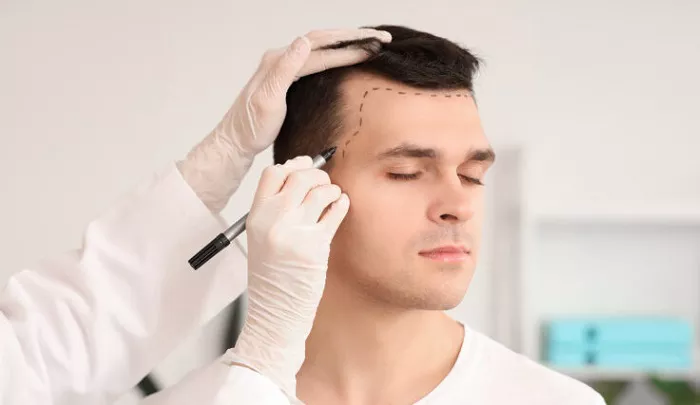Hair transplant surgery is a popular procedure that can restore a person’s hair and confidence. However, many people wonder if they can still go bald after a hair transplant. In this comprehensive guide, we will explore the factors that can affect hair loss after a hair transplant and what patients can do to maintain their hair and prevent further hair loss.
Understanding Hair Loss and Hair Transplant Surgery
Hair loss is a common condition that affects millions of people worldwide. It can be caused by a variety of factors, including genetics, age, hormonal changes, and medical conditions. Hair transplant surgery is a cosmetic procedure that involves moving hair follicles from one part of the scalp to another to restore hair growth in areas affected by hair loss.
While hair transplant surgery can be effective in restoring hair growth in the transplanted areas, it does not prevent further hair loss in other areas of the scalp. This means that patients may still experience hair loss in other areas of the scalp after a hair transplant.
Factors That Can Affect Hair Loss After a Hair Transplant
Hair transplant surgery is a popular procedure that can restore a person’s hair and confidence. However, many people wonder if they can still go bald after a hair transplant. Several factors can affect hair loss after a hair transplant, including:
Genetics:
Genetics plays a significant role in hair loss, and some people may be more prone to hair loss than others. If a person has a family history of hair loss, they may be more likely to experience further hair loss after a hair transplant.
Age:
Age is another factor that can affect hair loss. As people age, their hair follicles may become less active, which can lead to thinning hair and hair loss. Older patients may be more likely to experience further hair loss after a hair transplant.
Hormonal Changes:
Hormonal changes can also affect hair loss. For example, men may experience hair loss due to changes in testosterone levels. Hormonal changes can also occur during pregnancy or menopause, which can lead to hair loss in women.
Medical Conditions:
Certain medical conditions, such as thyroid disorders or autoimmune diseases, can also cause hair loss. Patients with these conditions may be more likely to experience further hair loss after a hair transplant.
Medications:
Some medications can cause hair loss as a side effect. Patients taking these medications may be more likely to experience further hair loss after a hair transplant.
Lifestyle Factors:
Lifestyle factors, such as stress, poor nutrition, and smoking, can also affect hair loss. Patients who lead unhealthy lifestyles may be more likely to experience further hair loss after a hair transplant.
It is important to note that while these factors can affect hair loss after a hair transplant, there are steps patients can take to help prevent further hair loss. By maintaining a healthy lifestyle, using hair loss treatments, and protecting the scalp from the sun, patients can help to prevent further hair loss and maintain their hair after a hair transplant.
Preventing Further Hair Loss After a Hair Transplant
Hair transplant surgery can restore hair growth in the transplanted areas, but it does not prevent further hair loss in other areas of the scalp. Here are some tips to help prevent further hair loss after a hair transplant:
Maintain a Healthy Lifestyle:
A healthy lifestyle can help to promote hair growth and prevent further hair loss. This includes eating a balanced diet with plenty of protein, vitamins, and minerals, exercising regularly, and getting enough sleep. It is also important to stay hydrated and avoid smoking and excessive alcohol consumption.
Use Hair Loss Treatments:
There are several hair loss treatments available, including medications and topical treatments, that can help to slow or prevent further hair loss. These treatments can be used in combination with a hair transplant to help maintain hair growth and prevent further hair loss.
Avoid Tight Hairstyles:
Tight hairstyles, such as braids or ponytails, can pull on the hair and cause damage to the hair follicles. Avoiding tight hairstyles can help to prevent further hair loss.
Protect Your Scalp from the Sun:
Sun exposure can damage the hair and scalp, which can lead to further hair loss. It is important to protect the scalp from the sun by wearing a hat or using a sunscreen specifically designed for the scalp.
Manage Stress:
Stress can contribute to hair loss, so it is important to manage stress levels through relaxation techniques such as meditation, yoga, or deep breathing exercises.
Follow Post-operative Care Instructions:
Following the post-operative care instructions provided by your surgeon is essential to ensure proper healing and minimize the risk of complications. This includes avoiding strenuous activity, not touching or scratching the scalp, and avoiding exposure to chemicals or other irritants.
By taking these steps, patients can help to prevent further hair loss after a hair transplant and maintain their hair growth. It is important to work with a qualified and experienced hair transplant surgeon and to follow all post-operative care instructions to achieve the best possible results from a hair transplant surgery.
Conclusion
While hair transplant surgery can be effective in restoring hair growth in the transplanted areas, it does not prevent further hair loss in other areas of the scalp. However, by taking steps to maintain a healthy lifestyle, using hair loss treatments, avoiding tight hairstyles, and protecting the scalp from the sun, patients can help to prevent further hair loss and maintain their hair after a hair transplant. By working with a qualified and experienced hair transplant surgeon and following all post-operative care instructions, patients can achieve the best possible results from their hair transplant surgery.
Related Topics:

